 Ganador de categoría en los países:
Ganador de categoría en los países:
Havel Bridge Berlin-Spandau
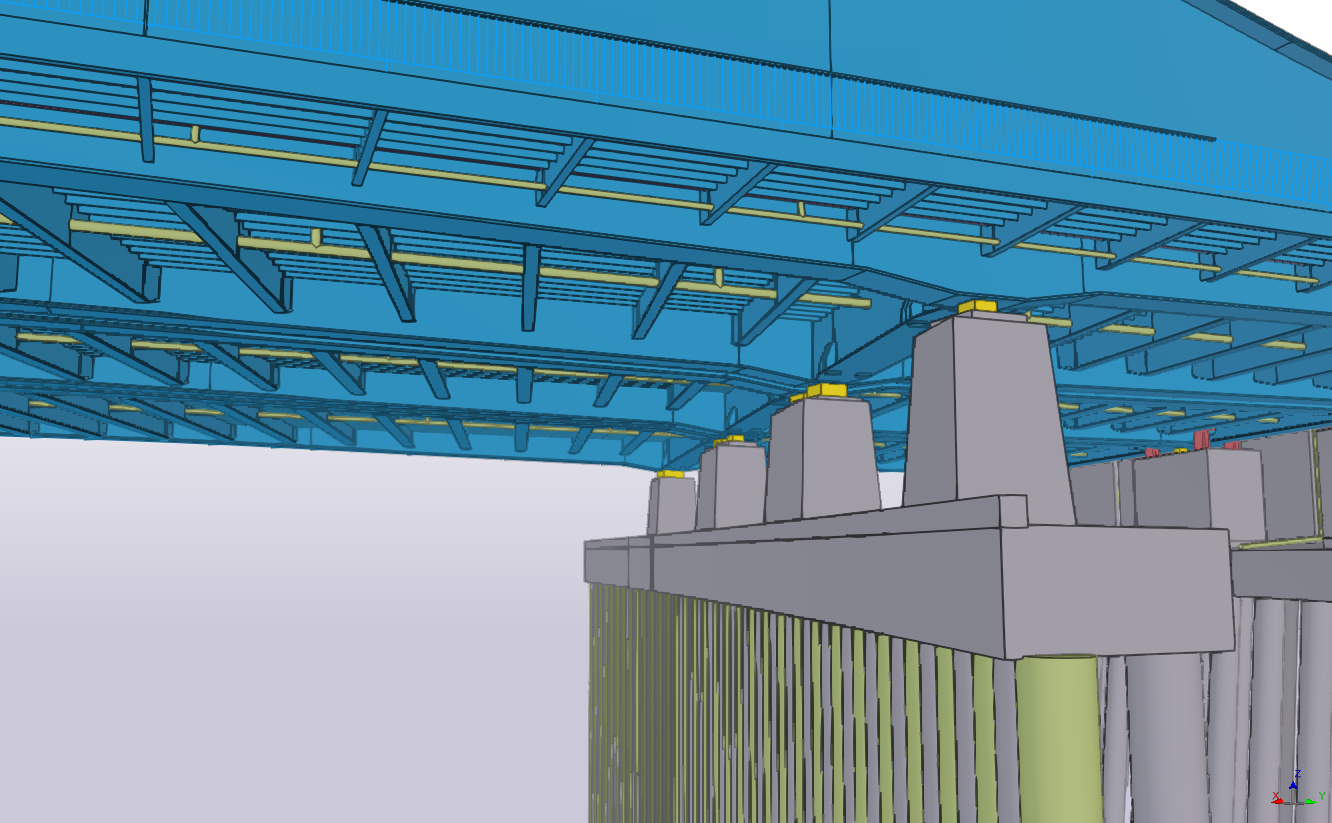
| Categoría | Proyectos de menor escala |
|---|---|
| Año | 2023 |
| País | Poland |
| Organización | AFRY Poland sp. z o.o. |
| Socios del proyecto | AFRY Deutschland |
| Autor | Krzysztof Kardzis |
| Cliente | DB Netz AG |
| Lugar de construcción | Berlin-Spandau |
| Tags |
Prezentowany model przedstawia istniejący most kolejowy zlokalizowany na rzece Hawela w miejscowości (dzielnicy) Berlin-Spandau w Niemczech. Rzekę przecina w tym miejscu łącznie siedem torów kolejowych. Trzy z nich są częścią kolei dużych prędkości na trasie Berlin – Hannover, pozostałe cztery wchodzą w skład innych tras. Model mostu jest tylko jednym z wielu modeli utworzonych na potrzeby projektu, którego celem jest stworzenie bazy BIM przydatnej podczas planowania prac związanych z utrzymaniem istniejących oraz budową nowych linii kolejowych. Model został stworzony na podstawie istniejącej dokumentacji rysunkowej. Efektem pracy jest plik IFC zawierający geometrię mostu oraz różne dodatkowe informacje istotne dla zamawiającego. Prezentowany model wspólnie z innymi tworzą bazę informacji BIM na temat opracowywanej linii kolejowej oraz jej otoczenia.
Całkowita długość mostu wynosi 121 m. Główny ustrój nośny składa się z sześciu trójprzęsłowych dźwigarów blachownicowych. Rozpiętości poszczególnych przęseł wynoszą odpowiednio 25 m – 71 m – 25 m. Kształt środników podąża za rozkładem sił wewnętrznych w elementach, czego efektem jest ich smukła, wydłużona budowa. Poszczególne dźwigary są przesunięte względem siebie wzdłuż osi podłużnej torowiska, co powoduje, że układ pomostów ma kształt równoległoboku. Dźwigary główne zostały połączone parami za pomocą skośnie usytuowanych dźwigarów poprzecznych, tworząc w ten sposób trzy niezależne pomosty (2 tory + 2 tory + 3 tory). Konstrukcja stalowa opiera się za pośrednictwem łożysk na wspólnych fundamentach.
https://earth.google.com/web/@52.53340745,13.20300378,32.3498496a,173.90904913d,35y,-99.22661642h,63.70542172t,0r
The model presents an existing railroad bridge located on the Havel River in the city (district) of Berlin-Spandau, Germany. The river is crossed at this location by a total of seven railroad tracks. Three of them are part of the high-speed railroad between Berlin and Hannover, while the other four are part of other routes. The model of the bridge is just one of many models created for the project, which aims to create a BIM database useful in planning work for the maintenance of existing and construction of new railroads. The model was created based on existing drawing documentation. The result of the work is an IFC file containing the geometry of the bridge and various additional information relevant to the client. The presented model, together with others, form a BIM information base on the railroad line under development and its surroundings.
The total length of the bridge is 121 meters. The main superstructure consists of six three-span plate girders. The spans of each span are 25 m – 71 m – 25 m, respectively. The shape of the webs follows the distribution of internal forces in the elements, resulting in a slender, elongated structure. The individual girders are offset from each other along the longitudinal axis of the track, resulting in a parallelogram-shaped arrangement of the piers. The main girders have been connected in pairs by obliquely located transverse girders, thus forming three independent platforms (2 tracks + 2 tracks + 3 tracks). The steel structure rests via bearings on common foundations.
https://earth.google.com/web/@52.53340745,13.20300378,32.3498496a,173.90904913d,35y,-99.22661642h,63.70542172t,0r
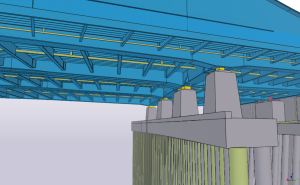

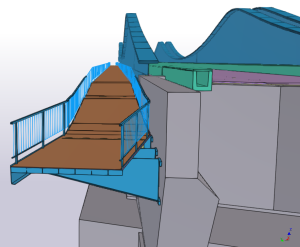
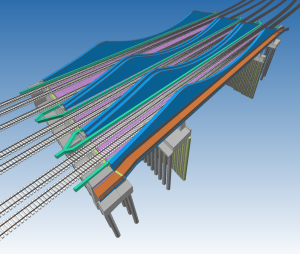
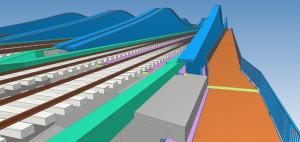

Well done, congratulation. It reminds me in my structural analysis, which I performed for the Sachsendamm railway bridge abutments and the pile foundations in Berlin in 1993.
Best regards
Paul
Thank you!
Best regards
Justyna
Congratulations!! Amazing work!!